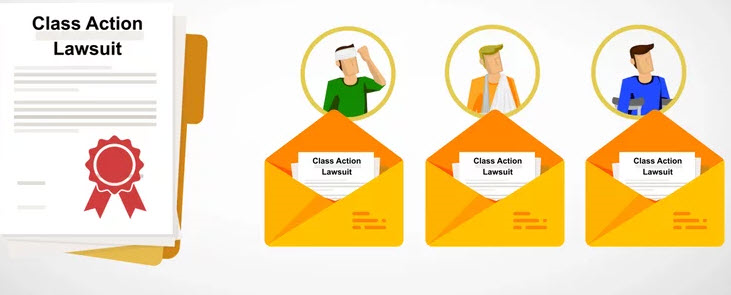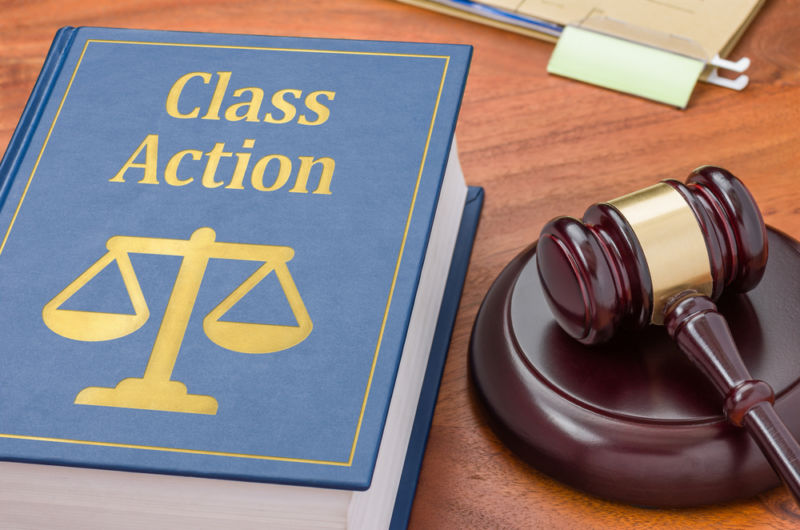Stamina in Numbers: Exploring the Effect of Class Action Lawsuits
Wiki Article
Comprehending Class Activity Suit: A Guide for Lawyers
Course action legal actions have actually become an integral part of the lawful landscape, enabling the consolidation of multiple cases into a solitary action. For legal representatives, understanding the details of course activity litigation is essential in properly representing their clients. This comprehensive overview checks out the basics of class action legal actions, from recognizing possible class members to navigating the accreditation procedure. In addition, it looks into key techniques for managing class action lawsuits and offers understandings into discussing and getting authorization for negotiations. By diving into the complexities of course activity suits, this guide gears up attorneys with the knowledge and devices required to effectively browse this intricate location of law.The Basics of Class Activity Lawsuits
Course activity lawsuits are a lawful mechanism used to settle similar insurance claims from a group of individuals right into a single legal action, offering a cost-effective and reliable technique to seeking justice and resolution. This sort of claim enables a representative plaintiff, acting on part of the entire class, to bring a claim against an offender that has actually purportedly created injury or violated the rights of numerous people.The basic requirements for bringing a class action legal action consist of numerosity, commonness, typicality, and competence of representation. Numerosity refers to the reality that the course should be so large that joinder of all participants would be impractical. Commonality suggests that there have to prevail concerns of regulation or fact that are shared by all members of the class. Typicality requires that the cases of the depictive plaintiff are normal of the claims of the entire class. Competence of depiction makes sure that the depictive plaintiff will appropriately represent the interests of the whole course.
Class activity lawsuits can be beneficial for both defendants and plaintiffs. For plaintiffs, it enables them to pool their resources and share the dangers and costs linked with lawsuits. When they are up against huge corporations or entities, it additionally offers a degree playing field. For defendants, it provides the opportunity to effectively deal with multiple insurance claims in a single lawsuit, avoiding the need to resist numerous private suits.
Identifying and Assessing Prospective Class Participants
After establishing the fundamental demands for a course action claim, the next step is to identify and analyze possible class participants. This process entails identifying that might belong to the course and reviewing their claims to establish if they satisfy the required criteria.To determine possible course participants, lawyers generally perform comprehensive research study and gather relevant details. This may involve reviewing documents, performing interviews, and checking out records to recognize individuals or entities that might have been affected by the supposed misdeed. It is crucial to establish a extensive and clear checklist of possible class members to make certain that all affected celebrations are consisted of in the claim.
When prospective course participants have been determined, the next action is to assess their insurance claims. This includes evaluating the benefits of each private case to identify if they meet the legal requirements for course qualification. Lawyers have to carefully evaluate the facts, evidence, and lawful theories of each prospective course participant's insurance claim to guarantee that they have a sensible instance.
Examining potential class members likewise includes figuring out whether they satisfy the course definition and have suffered similar harm as an outcome of the defendant's activities. This calls for comparing the truths and situations of each potential course member's circumstance to the claims and lawful theories put forth in the claim.
Navigating the Course Accreditation Process
To efficiently browse the course certification process, attorneys need to faithfully adhere to the step-by-step demands stated by the court. Course qualification is a vital action in a class action suit, as it determines whether a situation can continue as a class activity, standing for a team of people who have similar insurance claims against an offender. The procedure includes satisfying details requirements, such as numerosity, commonness, typicality, and adequacy of depiction.To start with, legal representatives have to establish numerosity by demonstrating that the course is so huge that specific joinder is impractical. This can be attained via evidence or professional statement. They must develop commonality by showing that there are usual questions of law or reality that predominate over private problems. This requires a comprehensive analysis of the defenses and claims included.
Following, attorneys have to reveal typicality, which implies that the depictive plaintiff's cases are normal of the cases of the course participants. This ensures that the rate of interests of the representative plaintiff straighten with the passions of the class. Legal representatives need to show adequacy of depiction, indicating that the representative complainant and their advice will fairly and properly stand for the rate of interests of the class.
To browse this procedure effectively, lawyers must extensively prepare by conducting extensive research study, gathering evidence, and establishing a compelling argument that satisfies each of these criteria. They have to additionally be prepared to reply to any kind of objections or challenges increased by the accused. By faithfully sticking to the step-by-step demands stated by the court, legal representatives can enhance their opportunities of obtaining class qualification and progressing the interests of the class members.

Key Methods for Managing Class Action Litigation
Upon efficiently browsing the class certification process, lawyers must after that news apply essential approaches for effectively handling class action lawsuits. These approaches are crucial to ensure that the situation continues smoothly and efficiently, ultimately taking full advantage of the chances of a favorable result for the class members.
One trick strategy is to establish a solid and natural legal team (Class action lawsuit). This includes setting up a team of attorneys with competence in course action litigation, as well as other relevant areas such as the specific industry or subject entailed in the case. A versatile team can bring various viewpoints and skills to the table, improving the total efficiency of the litigation
Another important technique is to establish a detailed and well-thought-out lawsuits strategy. This plan should lay out the general objectives of the instance, along with the particular legal theories and debates that will certainly be gone after. It ought to also consist of a timeline and budget to make sure that the case remains on track and within the allotted resources.
Furthermore, lawyers need to proactively engage with the course participants throughout the lawsuits process (Class action lawsuit). This includes supplying normal updates on the progression of the instance, looking for input and feedback from the class participants, and attending to any type of concerns or worries they may have. By promoting open communication and partnership, attorneys can develop trust fund and support among the class participants, which can be crucial in attaining a successful resolution
Working Out Class Activity Lawsuits: Arrangement and Approval
When it involves working out class action suits, reliable settlement and getting authorization are vital action in achieving a resolution. Course activity claims are complex and entail a lot of plaintiffs, making it important to reach a settlement that is fair and adequate to all parties entailed.
As soon as a settlement contract is reached, it should be accepted by the court. The court's function in this process is to ensure that the settlement is fair, sensible, and appropriately safeguards the passions of the course participants. The court will take into consideration aspects such as the nature of the claims, the strength of the evidence, the possible recovery for the course participants, and any type of objections raised by class members.
Getting court approval is vital as it supplies finality to the negotiation and secures the passions of the course participants. It guarantees that the negotiation is binding and enforceable, and course members can obtain their rightful settlement.
Conclusion

Course activity suits have ended up being an integral component of the legal landscape, enabling for the loan consolidation of multiple insurance claims right into a single action. Class qualification is an important action in a class action suit, as it determines whether an instance can proceed as a class activity, representing a team of individuals that have comparable insurance claims versus an offender. By faithfully sticking to the procedural needs established forth by the court, legal representatives can boost their possibilities of acquiring course accreditation and progressing the rate of interests of the class members.
The court will think about elements such as the nature of the insurance claims, the strength of the proof, the prospective recovery for the course members, and any visite site kind of objections increased by class participants.
By determining and examining potential course participants, lawyers can identify the viability of a class activity lawsuit.
Report this wiki page